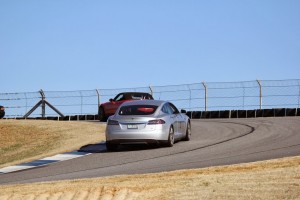Racing
Taking a Model S to the track with John Tamplin, part IV
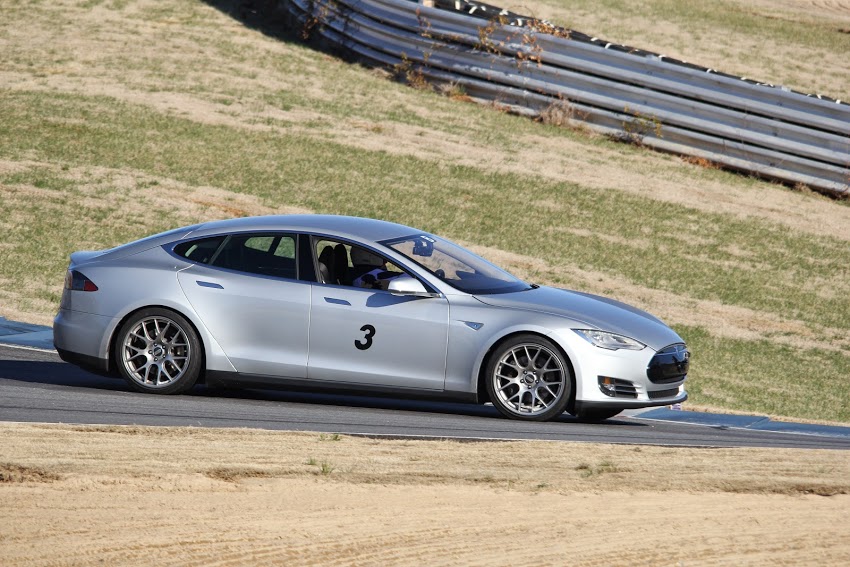
Yesterday, in part III, we looked at the electric and tire pressure specifics of taking your Model S to the track. Today, we focus on late corner braking and what future electric vehicle (EV) car would be a great track day ride.
Part IV
NZ – In the videos you posted on YouTube (Link), you seem to brake later than a gasoline cars. Is that a fair statement in general?
JT – Well, remember this is an HPDE, so the other drivers aren’t pushing it as hard as they can either. I have no idea what the condition of their car is, whether they might be less-capable OEM brakes, for example. Having said this, I think the combination of the large brakes of the Model S and the incredible grip of the wide, sticky Rivals lets me brake later than many other cars. I was riding in a race-prepped Spec BMW E30 with slick, and I noticed that he had to brake much earlier than I did from a similar top speed, but he could carry a lot more speed through the corner because the car weighed half as much. It didn’t have a tendency to understeer, as most street cars do for stability.
Probably on a related note, I noticed that I could actually get through the twisty parts at Road Atlanta faster than some much lighter cars, which seems like it has to come down to the tires or the drivers being more cautious.
NZ – If you had another EV choice to bring to the track, what would it be?
JT – Hmm, a Rimac sounds like fun if they get it built and a Formula E car would probably be more car than I could handle, but more practically it would be interesting to drive a Tesla Roadster around the track and get all that torque in a much lighter car.
NZ – Any last thoughts or words of advice for those who are considering bringing a Model S to the track?
JT – While what I do isn’t racing, I wouldn’t be driving my Model S in wheel-to-wheel racing. I don’t think it would work out very well with the drivetrain temperature limitations and limited battery capacity. HPDE works out pretty well, since you have enough time between sessions you can get some charging in and let the drivetrain cool, but you still get enough track time to make it worthwhile.
The Model S also makes telemetry data available (the same API used by the mobile apps). I can record and analyze it later. I’m currently finishing up code to draw graphs, etc. to overlay on the video, which is helpful as well.
I would definitely recommend getting dedicated track tires, even if you have the extreme summer performance tires. For instance, I found the Rivals are that much better. You also need to plan where you are going to be charging, but in the end, just go have fun. I highly recommend HPDE organizations that have controlled passing and instructors for new drivers. If wrecking the car would cause serious financial hardship, get track-day insurance, if your regular insurance won’t cover it. Just be prepared that after you do it once, you won’t want to stop 🙂
Part IV
NZ – In the videos you posted on YouTube (Link), you seem to brake later than a gasoline cars. Is that a fair statement in general?
JT – Well, remember this is an HPDE, so the other drivers aren’t pushing it as hard as they can either. I have no idea what the condition of their car is, whether they might be less-capable OEM brakes, for example. Having said this, I think the combination of the large brakes of the Model S and the incredible grip of the wide, sticky Rivals lets me brake later than many other cars. I was riding in a race-prepped Spec BMW E30 with slick, and I noticed that he had to brake much earlier than I did from a similar top speed, but he could carry a lot more speed through the corner because the car weighed half as much. It didn’t have a tendency to understeer, as most street cars do for stability.
Probably on a related note, I noticed that I could actually get through the twisty parts at Road Atlanta faster than some much lighter cars, which seems like it has to come down to the tires or the drivers being more cautious.
NZ – If you had another EV choice to bring to the track, what would it be?
JT –
Hmm, a Rimac sounds like fun if they get it built and a Formula E car would probably be more car than I could handle, but more practically it would be interesting to drive a Tesla Roadster around the track and get all that torque in a much lighter car.
NZ – Any last thoughts or words of advice for those who are considering bringing a Model S to the track?
JT – While what I do isn’t racing, I wouldn’t be driving my Model S in wheel-to-wheel racing. I don’t think it would work out very well with the drivetrain temperature limitations and limited battery capacity. HPDE works out pretty well, since you have enough time between sessions you can get some charging in and let the drivetrain cool, but you still get enough track time to make it worthwhile.
The Model S also makes telemetry data available (the same API used by the mobile apps). I can record and analyze it later. I’m currently finishing up code to draw graphs, etc. to overlay on the video, which is helpful as well.
I would definitely recommend getting dedicated track tires, even if you have the extreme summer performance tires. For instance, I found the Rivals are that much better. You also need to plan where you are going to be charging, but in the end, just go have fun. I highly recommend HPDE organizations that have controlled passing and instructors for new drivers. If wrecking the car would cause serious financial hardship, get track-day insurance, if your regular insurance won’t cover it. Just be prepared that after you do it once, you won’t want to stop 🙂
Lifestyle
Diabetic Baja 1000 racer steals the show with ad hoc Starlink Mini setup
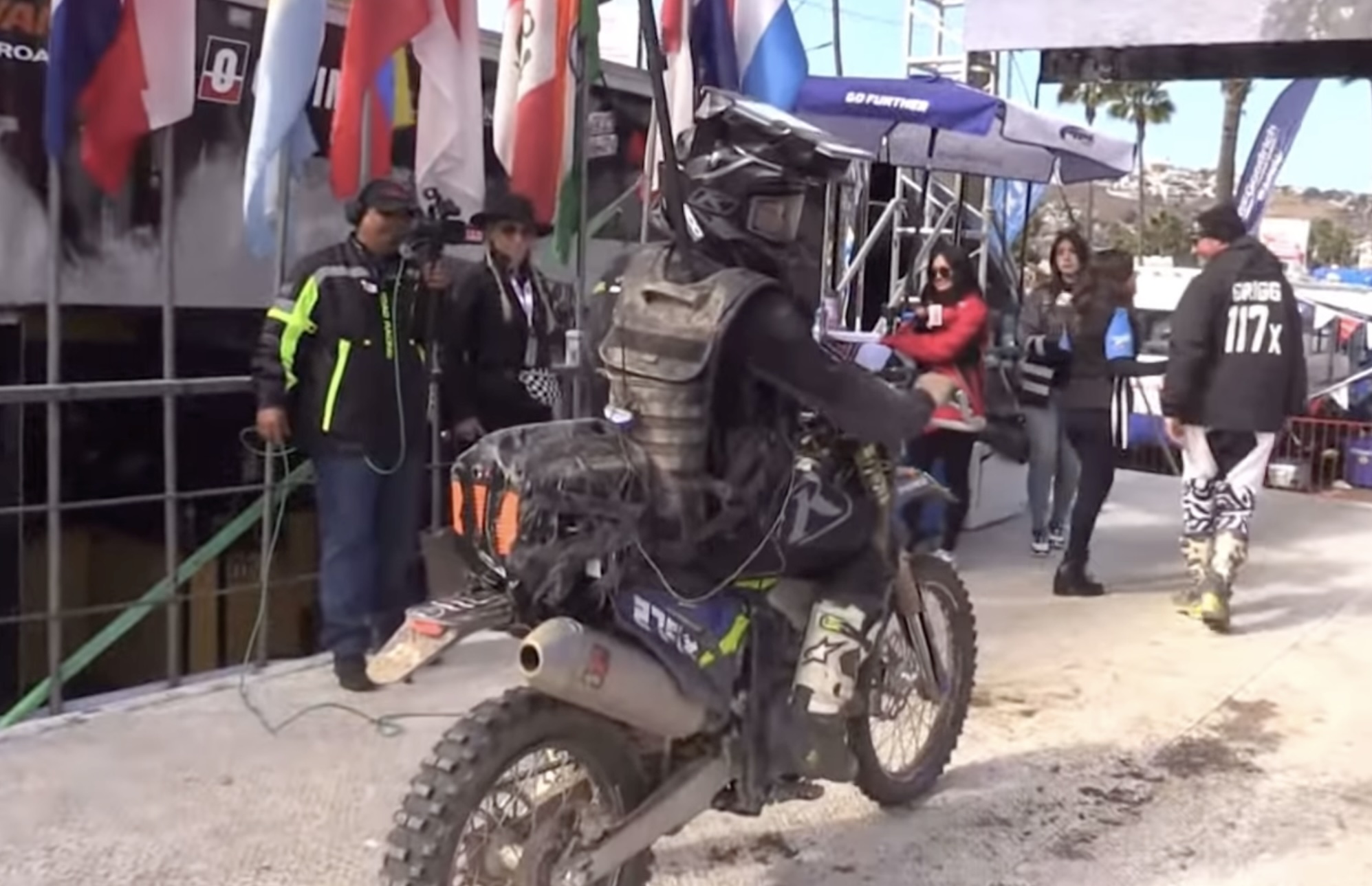
A dirt bike rider stole the show at the Baja 1000 by completing the grueling 1,000-mile race while live-streaming to his mother using Starlink Mini the whole time. The rider, Ben Hundter, and his brother David, completed the race in 31 hours 30 minutes, which is a pretty long FaceTime video call, all things considered.
A video of Hundter finishing the race has made the rounds online, partly due to the racer’s eye-catching Starlink Mini setup. As could be seen in the video, Ben Hundter’s 279X Sportsman Moto class Sherco was equipped with a huge Jackery battery at the rear. The Starlink Mini was duct taped to the rider’s head. The iPhone that Hundter was using to FaceTime his mother was also taped to his chest.
In an interview following the race, Hundter explained that he had always wanted to race the Baja 1000, but his mother was hesitant since he has Type 1 diabetes. And while she did allow him to participate in the grueling race, she had one condition—he has to livestream the race to her the entire time. As such, the Starlink Mini, with its low power consumption, light weight, and high speed internet connectivity, became the perfect solution for the dirt bike racer.
“I wanted to race the Baja so bad, but my mom wouldn’t let me because I have type 1 diabetes. She said the only way I could race it is if I was live streaming to her the whole time, so I have her on my chest right now,” Hundter noted. He also joked that he and SpaceX CEO Elon Musk came up with the duct taped Starlink Mini solution.
Cool— Elon Musk (@elonmusk) November 18, 2024
Elon Musk did see the video of the dirt bike racer completing the Baja 1000 while live-streaming through Starlink, and the CEO seemed impressed. In a reply to a video of the Baja 1000 participant on social media platform X, Musk stated that the feat was “cool.”
Completing the Baja 1000 this year is already a feat in and of itself, so Ben Hundter and his brother David are coming home as winners. Unfortunately for the brothers, they ended up running afoul of a road closure during the race, resulting in the team running an “illegal line” through the peninsula, as noted in a Jalopnik report. This resulted in the brothers getting a 17-hour penalty and a disqualification.
Don’t hesitate to contact us with news tips. Just send a message to simon@teslarati.com to give us a heads up.
Lifestyle
Unplugged Tesla Model S and Model 3 win double podium finishes at Gridlife Laguna
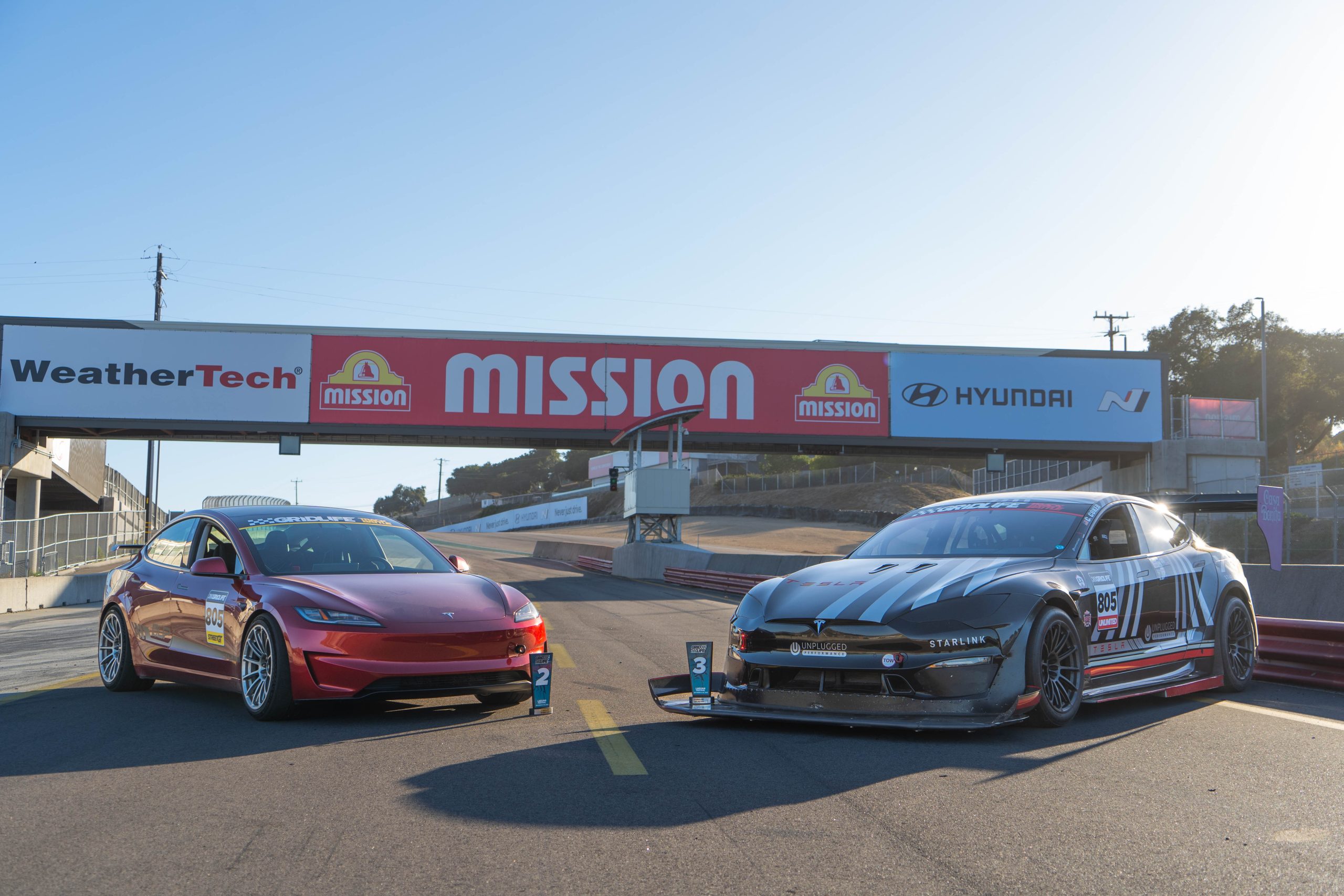
A Tesla Model S Plaid and a reengineered Model 3 Performance from EV tuning house Unplugged Performance participated in the Gridlife Laguna Festival at the Weathertech Raceway Laguna Seca. The twin Teslas ended the event with a rare double podium finish.
The Gridlife Laguna Festival did not have a lot of electric vehicles that participated in the event. In a comment to Teslarati, Unplugged Performance development driver and experienced EV racer Craig Coker mentioned that there were fewer than five electric cars at Gridlife Laguna. Both vehicles competed in Gridlife’s TrackBattle series, which features practice, qualifying, and a final podium sprint. The team’s Model S Plaid, a Pikes Peak sub-10-minute club member called Dark Helmet, competed in the Unlimited Class, and the Model S Performance, called Red Rocket, competed in the Street GT Class.
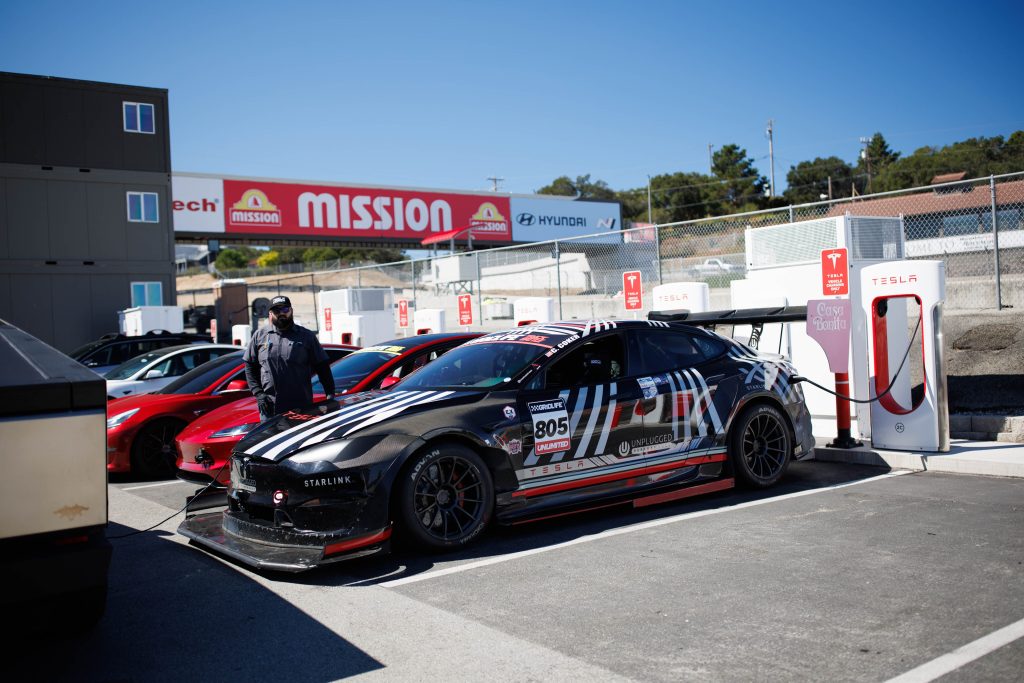
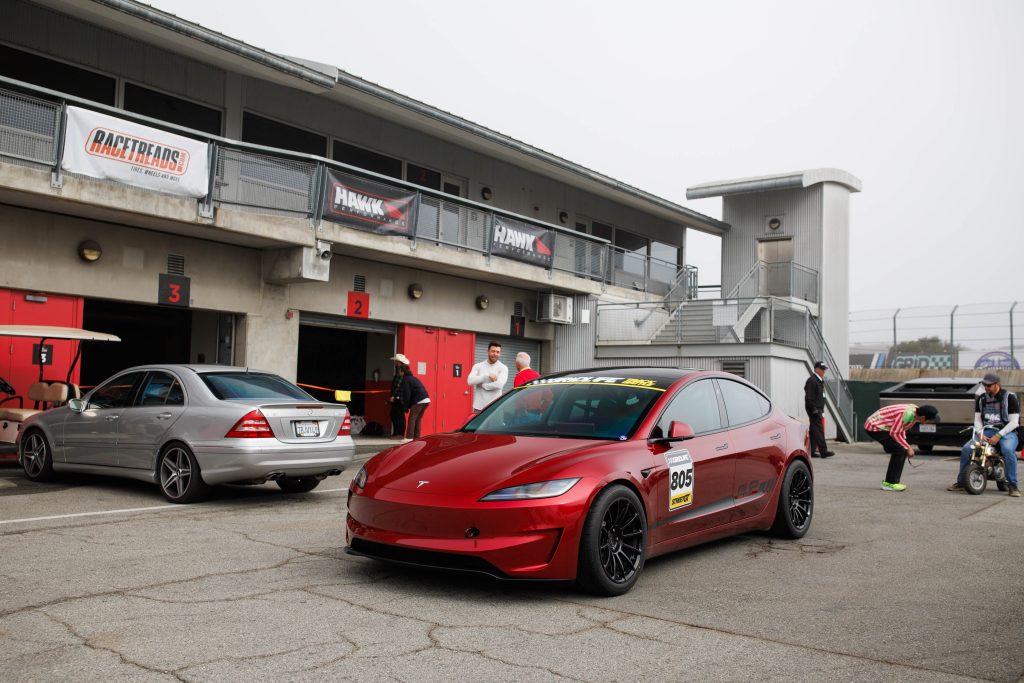
Unique Racers
What is interesting about Unplugged Performance’s twin Tesla racers is the fact that they are very different from what one might expect from a vehicle that’s built to be competitive in a racing event. While Dark Helmet features aggressive aero and a stripped-out interior, it still features a stock drivetrain, battery, and software from Tesla. Conventional racecars powered by the internal combustion engine are typically modified so they can put out more power.
Such a statement is even more accurate for Red Rocket. The reengineered Model 3 Performance competed in the Street GT Class, which is a category for production cars with restrictions on tire width and factory aero components. Similar to Dark Helmet, whose modifications are mostly comprised of Unplugged Performance’s Apex-S Model S series, Red Rocket’s modifications are comprised of the EV tuner’s Ascension-R parts.
In a comment to Teslarati, Craig Coker noted that Red Rocket is easily daily driven, so much so that the vehicle was driven by the Unplugged team to the event, unlike Dark Helmet, which was transported to Laguna Seca via trailer pulled by a Tesla Cybertruck. That speaks to the reengineered Model 3 Performance’s capabilities, and it also highlights how the EV tuner’s parts could still be useful for everyday use.
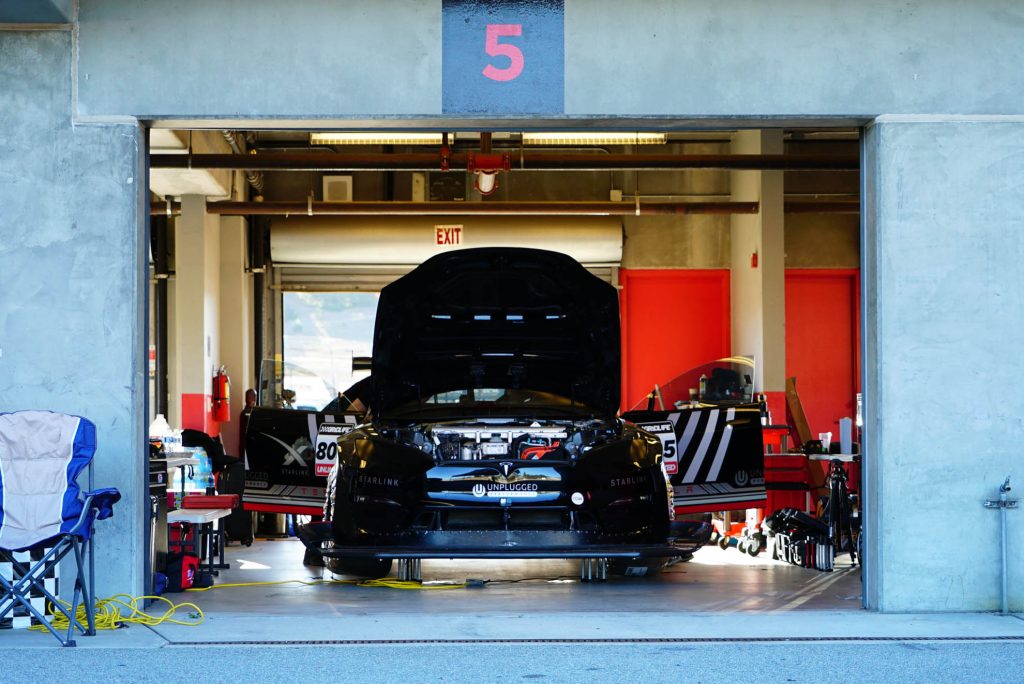
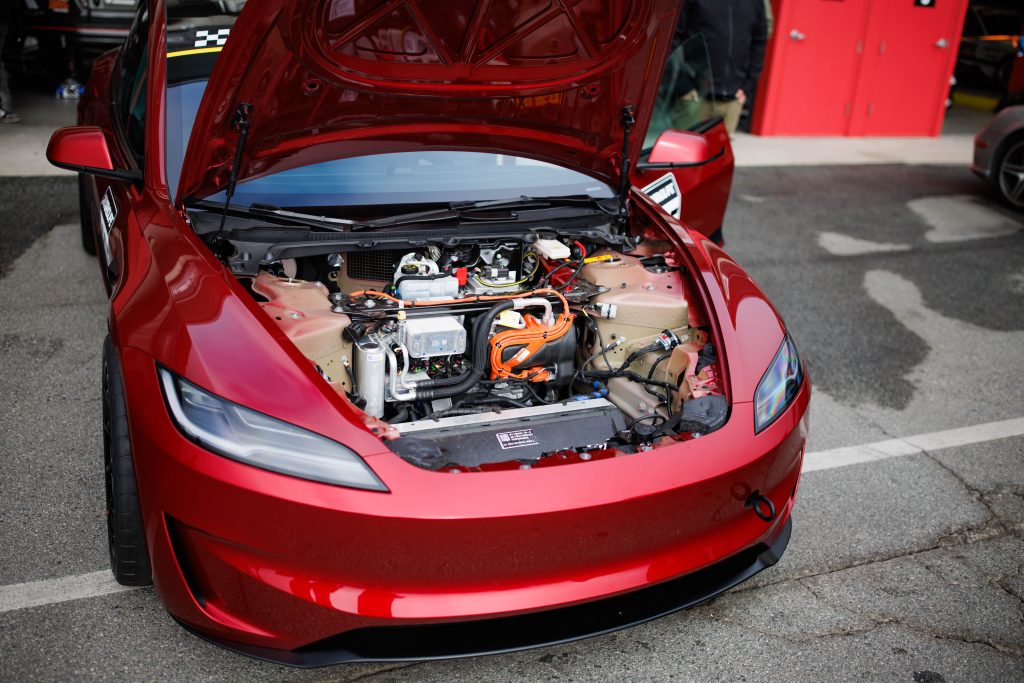
“The 2024 Model 3 Performance we competed with, I would definitely take to the streets, get groceries and take my kids to school. In fact, we drove it to Laguna Seca from LA. Then we competed in it and then drove it back to LA,” Craig Coker said.
The Podium Sprint
The twin Teslas both qualified for the podium sprint in their respective classes, despite some challenges such as Dark Helmet spinning out in one lap. Despite spinning out, Dark Helmet still qualified for the event’s podium sprint. Red Rocket accomplished the same thing, placing second in its class and qualifying for the podium sprint. The Model 3 Performance’s podium sprint ended with a 1:35.666 lap, allowing the vehicle to place second overall in the Gridlife Street GT Class. Dark Helmet completed its podium attempt lap in 1:28.465, allowing the all-electric racer to place third overall in the Unlimited Class. Both vehicles also set all wheel drive records for Street GT for Red Rocket and the Unlimited Class for Dark Helmet.
Craig Coker shared a comment about this year’s Gridlife event, as well as the performance of the twin Unplugged Teslas. “These events are always interesting as we are one of the few EV’s to compete. There are 100’s of vehicles on track over the weekend but less than five EVs in the mix. Sometimes we are hated, sometimes we are made fun of, and sometimes people love what we do.
“But there is one thing no one can deny. When we show up to the track we are consistent in setting records, or a podium, or occasionally both. At Gridlife Laguna this year we went beyond and surprised many with not one but two podiums with two different vehicles in two separate classes. This is a very rare achievement. It could only be achieved with a hardworking and talented pit crew by my side,” he said.
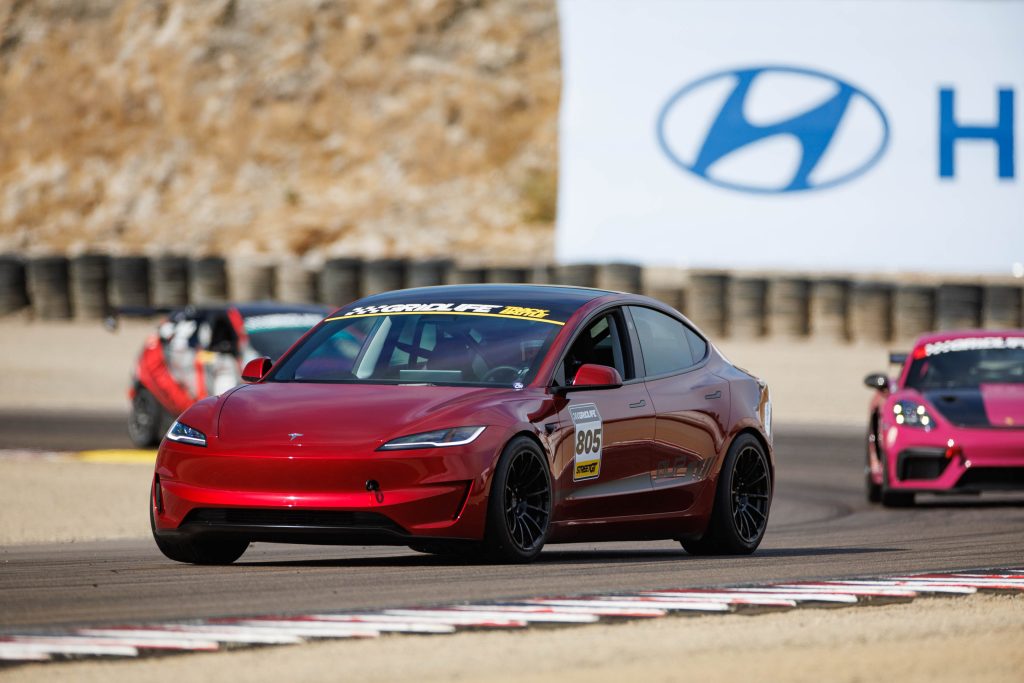
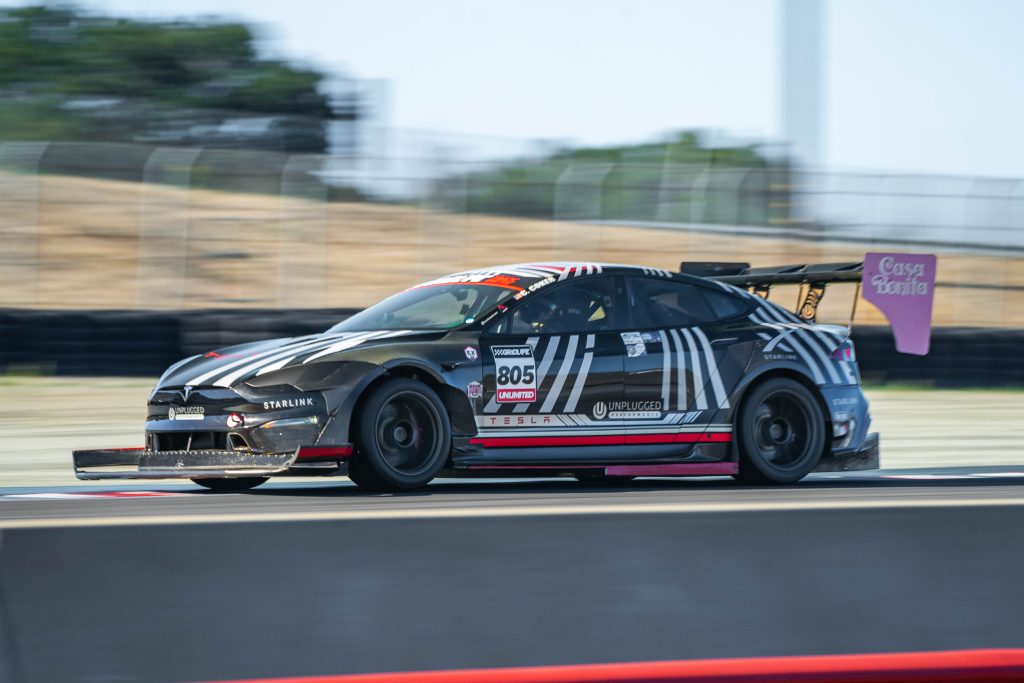
Unplugged Performance CEO Ben Schaffer celebrated the twin Tesla’s achievements at the event.
“The UP Race team, along with our development driver Craig Coker, did a fantastic job. We brought out two Laguna Seca record-holding vehicles: the production EV lap record-holding Model S Plaid, ‘Dark Helmet,’ and our 2024 Model 3 Performance, ‘Red Rocket,’ which holds the lap record for the Model 3 Performance class. Both cars performed reliably against a highly competitive grid of the fastest ICE vehicles and drivers in the country.
“The Model 3 set the Gridlife Laguna Seca fastest lap record for Street Class AWD, while the Model S continues to hold the Unlimited Class AWD lap record. Craig secured two podium finishes, demonstrating the true driving performance of Tesla engineering when paired with the same Unplugged Performance catalog parts our clients enjoy worldwide. EVs deserve a place in motorsports and we remain thrilled to be a rare representative of EV performance in challenging the fastest ICE vehicles at events globally,” Schaffer stated.
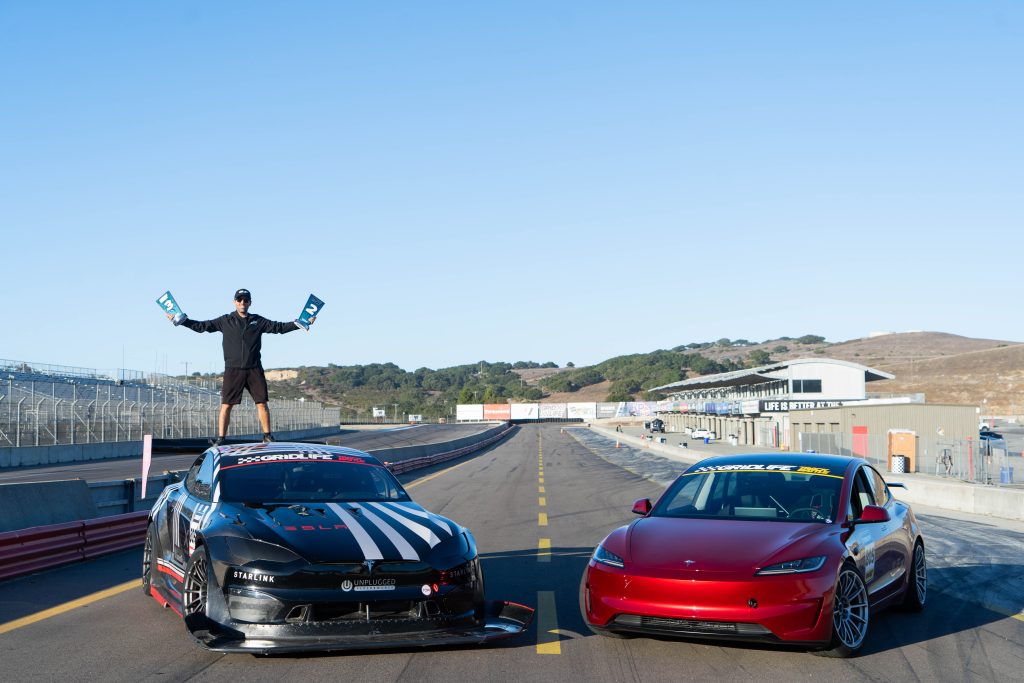
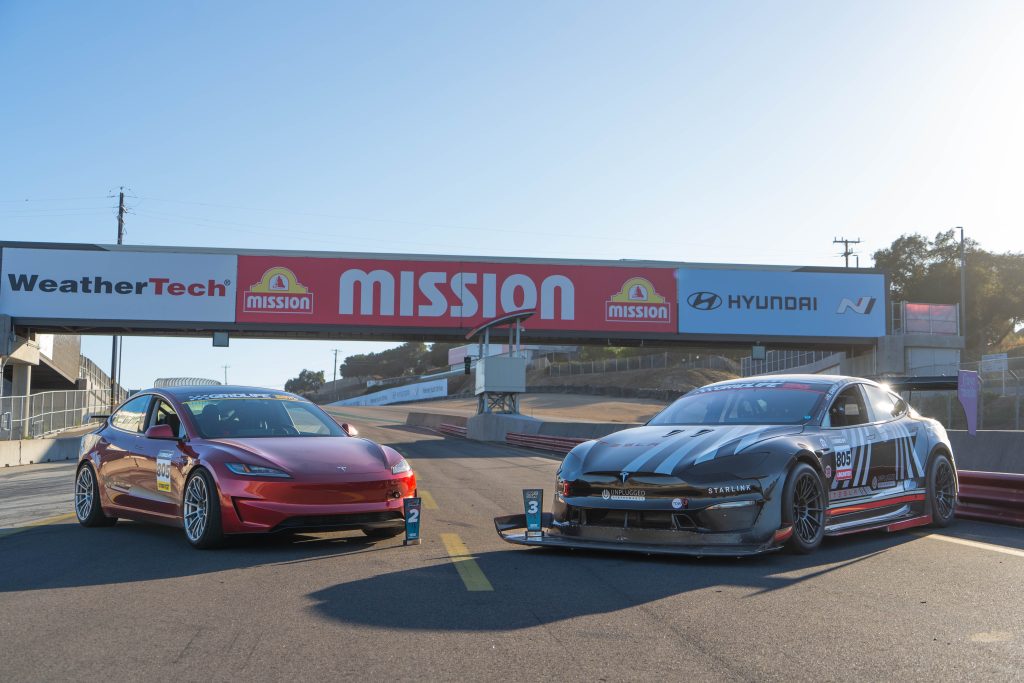
The Next Stop
With Gridlife Laguna now complete, the Unplugged Performance team is now focused on the upcoming race at Thunderhil, which is expected to be held next month.
“Gridlife announced a new west coast championship for 2024 called FCP Euro Pacific Championship. It’s a 3 stop event. Willow Springs, Laguna Seca and Thunderhill. So far we have captured 1st at Willow Springs Raceway, 3rd at Laguna Seca in the Unlimited Class. We are currently P1 in overall points. If we do well at Thunderhill next month we can win the championship. That would be a huge accomplishment for an EV to win this inaugural championship!” Coker said.
There are only a few cars in the hyper-competitive world of automotive racing that are capable of changing the perception of what is possible for a production car. At the track, where victory and defeat are separated by milliseconds, few cars could make an impact large enough that even critics are silenced. As it turns out, the Model S Plaid and the Model 3 Performance—improved by bolt-on parts—could be these vehicles.
Watch a video of the Unplugged Tesla team at the Gridlife Laguna Seca event below.
Don’t hesitate to contact us with news tips. Just send a message to simon@teslarati.com to give us a heads up.
Lifestyle
New Tesla Model 3 Performance pulls off 10.65-second 1/4-mile run
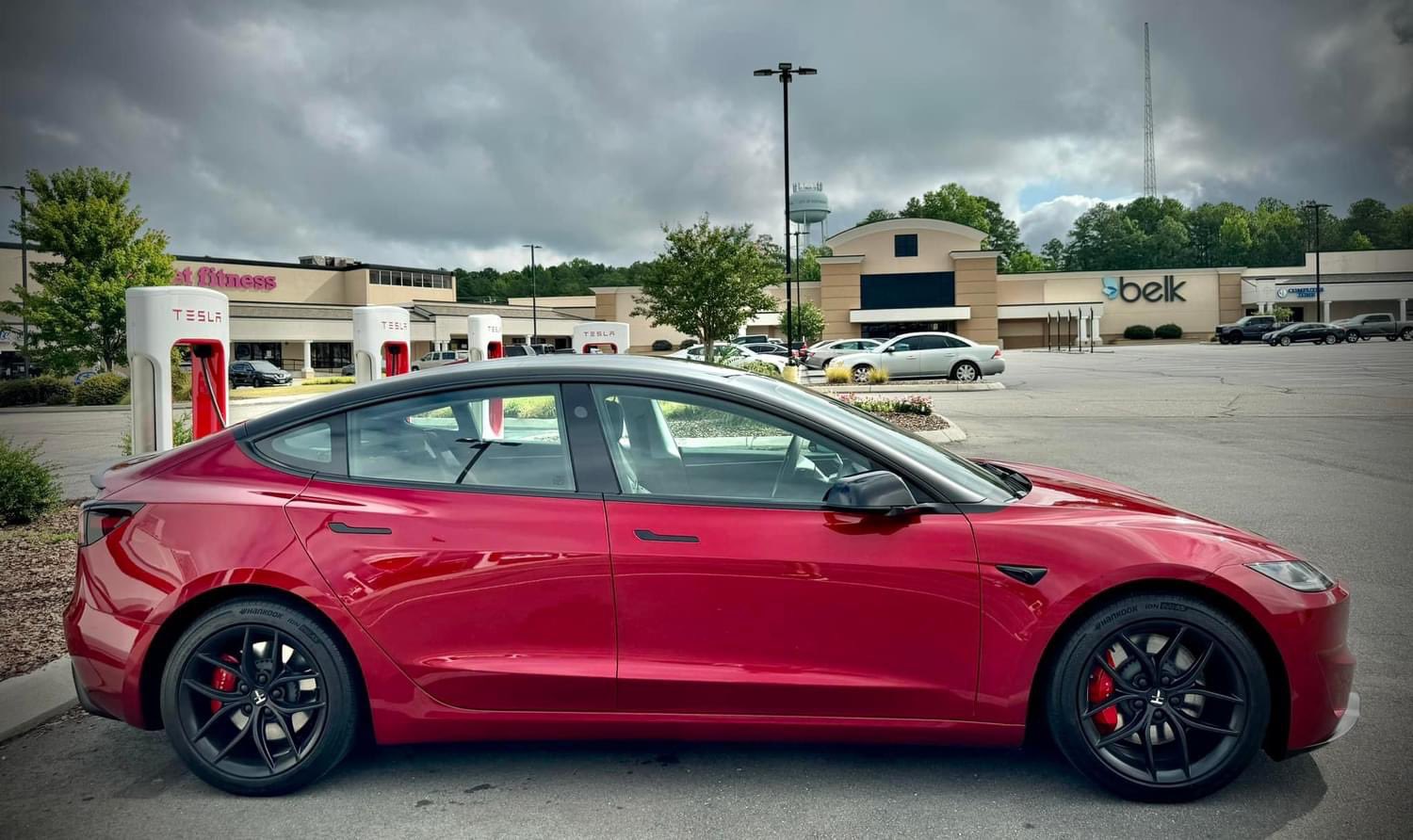
The reengineered Tesla Model 3 Performance is steadily establishing its reputation as the best-performing car in its price range, electric or otherwise. As shared recently on social media, a reengineered Model 3 Performance with a semi-stripped interior was able to complete a quarter-mile run in just 10.65 seconds at 128.05 mph.
The driver of the new Tesla Model 3 Performance, Travis Wills, shared some insights from his run in a post on a Tesla Model 3 and Y Performance Facebook Group. As per Wills, he reduced his Model 3’s weight by about 100 lbs by removing the vehicle’s passenger seats. Wills noted that he weighs over 200 lbs, so he noted that his Model 3’s semi-striped times will probably be comparable to a non-stripped vehicle with a lighter driver.
WORLD RECORD 2024 Model 3 Performance 1/4 mile & 0-60 mph!
1/4 mile in 10.65s@128.05mph
0-60 mph in 2.78s ?
The Model 3 was semi stripped with all passenger seats removed (-100 lbs), and fitted with 18” wheels with Hankook all season tires.
Provided by Travis Willis pic.twitter.com/3gwf0V3PiA— Nic Cruz Patane (@niccruzpatane) July 14, 2024
Apart from its removed seats, Wills’ reengineered Model 3 Performance was stock. It was even equipped with 235/45/18 Hankook All Season efficiency tires. The Tesla driver stated that he optimized his car by navigating to a Supercharger, so the vehicle’s battery temperature was conditioned. Wills noted that this enabled him to pull off consistently good runs.
As could be seen in Wills’ video, the reengineered Tesla Model 3 Performance was able to go from 0-60 mph in just 2.78 seconds, quicker than the 2.9 seconds that is listed on Tesla’s official website. The Model 3 Performance was also able to complete the quarter mile in just 10.65 seconds at 128.05 mph.
https://t.co/uTdOcCUTb7 pic.twitter.com/pLb7fSFvjR— Nic Cruz Patane (@niccruzpatane) July 14, 2024
While these numbers are not as impressive as the Tesla Model S Plaid, such performance is already stunning for a car like the Model 3. A 10-second quarter-mile, after all, was previously only possible with a Model S P100D, the electric vehicle maker’s previous flagship car. In 2019, the Model S Performance’s “Raven” upgrade set a record by running a quarter mile in 10.6 seconds at 127.55 mph. Prior to this, the Model S P100D’s quarter-mile runs were typically recorded at about 10.8 seconds at 125 mph.
This suggests that with just a few missing seats — or a lightweight driver as Wills suggested — the reengineered Tesla Model 3 Performance could complete a quarter mile faster than the flagship Tesla Model S P100D. That’s insane value and performance for a vehicle that starts at just $54,990 before incentives.
Don’t hesitate to contact us with news tips. Just send a message to simon@teslarati.com to give us a heads up.
-

 Elon Musk3 days ago
Elon Musk3 days agoTesla investors will be shocked by Jim Cramer’s latest assessment
-

 News1 week ago
News1 week agoTesla Robotaxi’s biggest challenge seems to be this one thing
-

 News2 weeks ago
News2 weeks agoTexas lawmakers urge Tesla to delay Austin robotaxi launch to September
-

 Elon Musk2 weeks ago
Elon Musk2 weeks agoFirst Look at Tesla’s Robotaxi App: features, design, and more
-

 Elon Musk2 weeks ago
Elon Musk2 weeks agoxAI’s Grok 3 partners with Oracle Cloud for corporate AI innovation
-

 News2 weeks ago
News2 weeks agoSpaceX and Elon Musk share insights on Starship Ship 36’s RUD
-

 News2 weeks ago
News2 weeks agoWatch Tesla’s first driverless public Robotaxi rides in Texas
-

 News2 weeks ago
News2 weeks agoTesla has started rolling out initial round of Robotaxi invites


